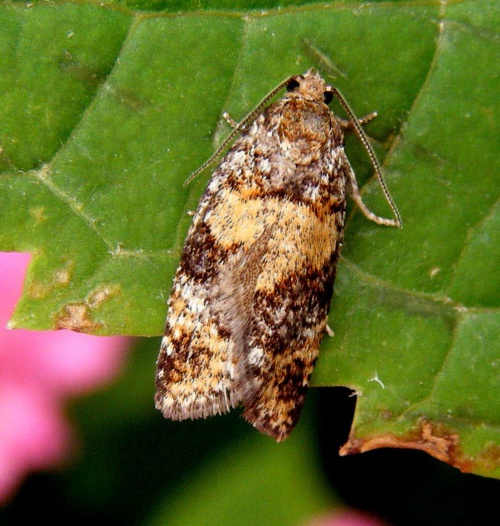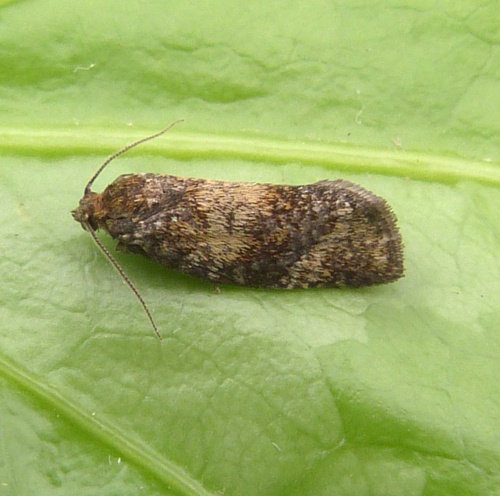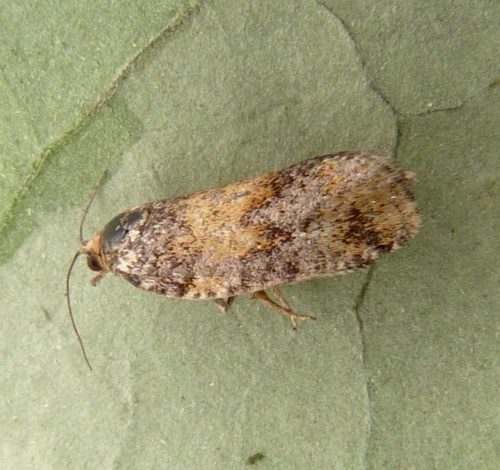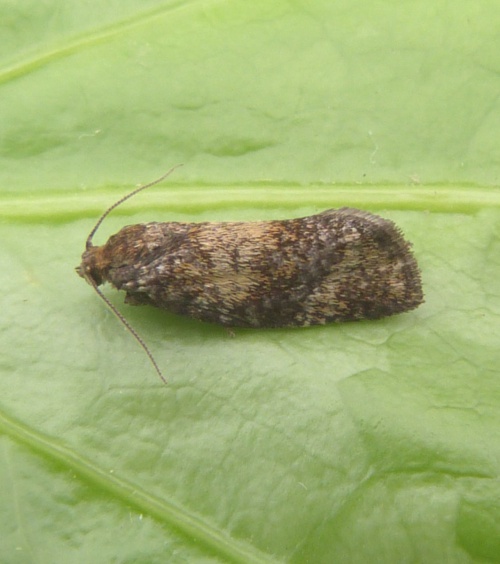Ptycholomoides aeriferana
Larch Twist
Ptycholomoides aeriferanus
Wingspan 17 to 21 mm. This can be quite a beautiful species with rich red-browns and gold.
Various habitats especially areas where the larval food plant is present.
The moths fly in July and August, and are attracted to light.
The food plant is European Larch, the larvae spinning the needles together.
Since its first discovery in Kent in 1951, it has quickly spread throughout a large part of England and is still expanding its range Northwards. In the Butterfly Conservation's Microlepidoptera Report 2011 this species was classified as common.
Fairly frequent but not common in Leicestershire & Rutland. L&R Moth Group status = B (scarce resident or restricted distribution or regular migrant)
Leicestershire & Rutland Map
Enter a town or village to see local records
MAP KEY:
Yellow squares = NBN records (all known data)
Coloured circles = NatureSpot records: 2020+ | 2015-2019 | pre-2015
UK Map
Species profile
- Common names
- Larch Twist
- Species group:
- Moths
- Kingdom:
- Animalia
- Order:
- Lepidoptera
- Family:
- Tortricidae
- Records on NatureSpot:
- 7
- First record:
- 05/07/2003 (Skevington, Mark)
- Last record:
- 10/07/2022 (Calow, Graham)
Total records by month
% of records within its species group
10km squares with records
The latest images and records displayed below include those awaiting verification checks so we cannot guarantee that every identification is correct. Once accepted, the record displays a green tick.
In the Latest Records section, click on the header to sort A-Z, and again to sort Z-A. Use the header boxes to filter the list.





